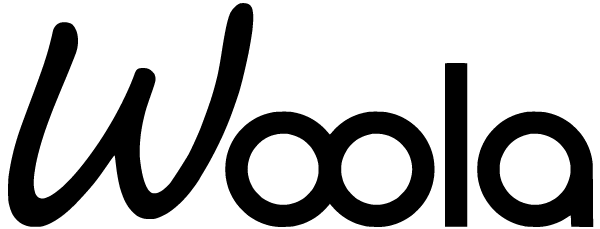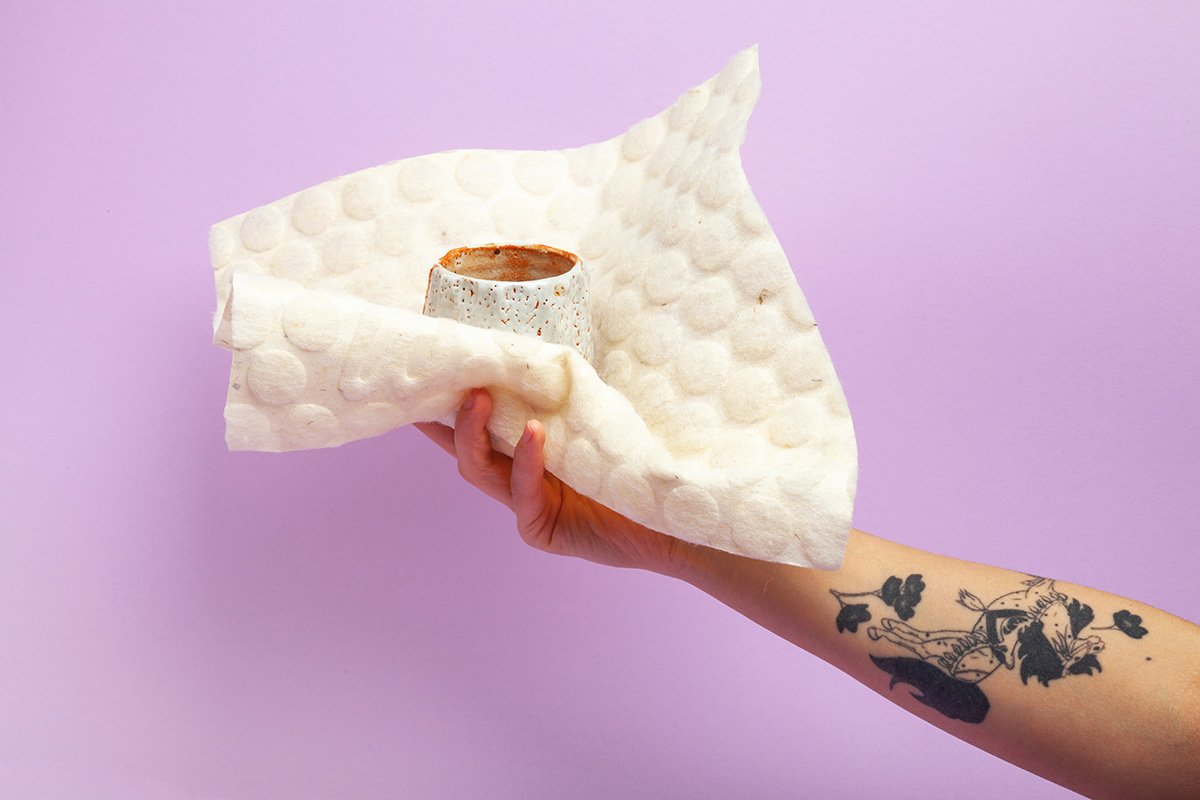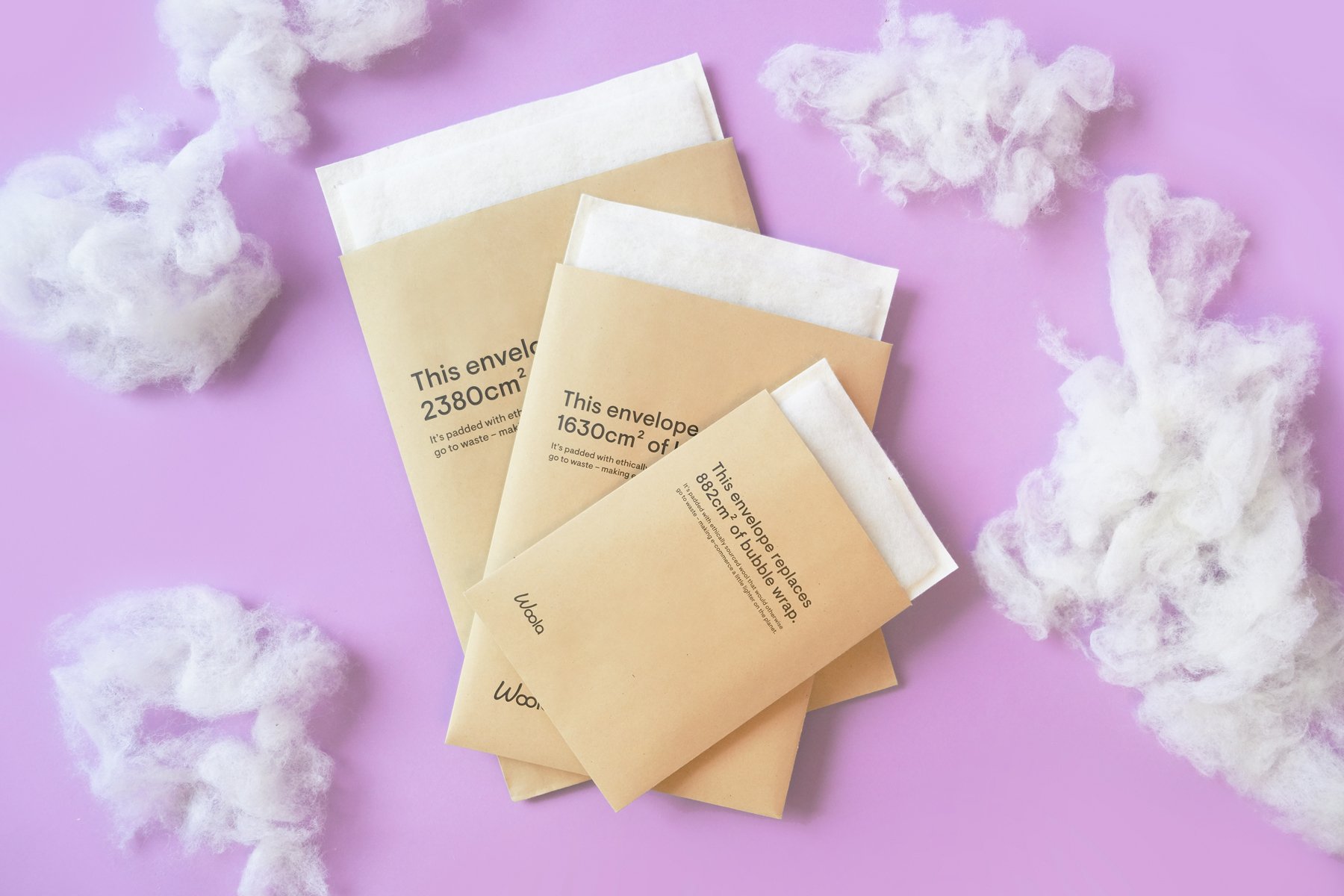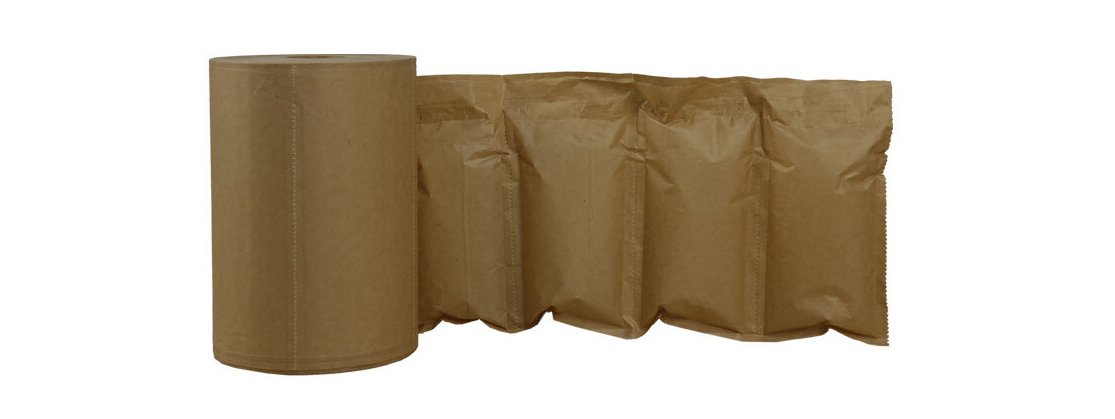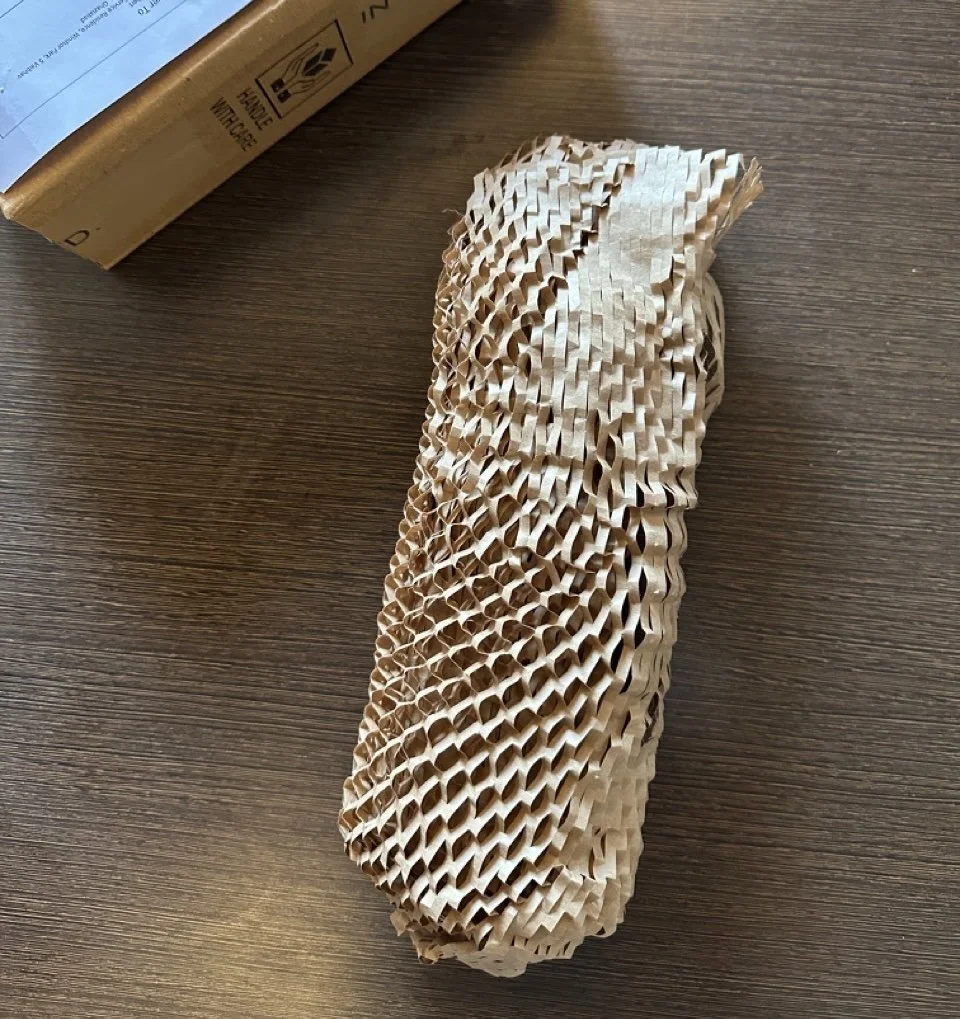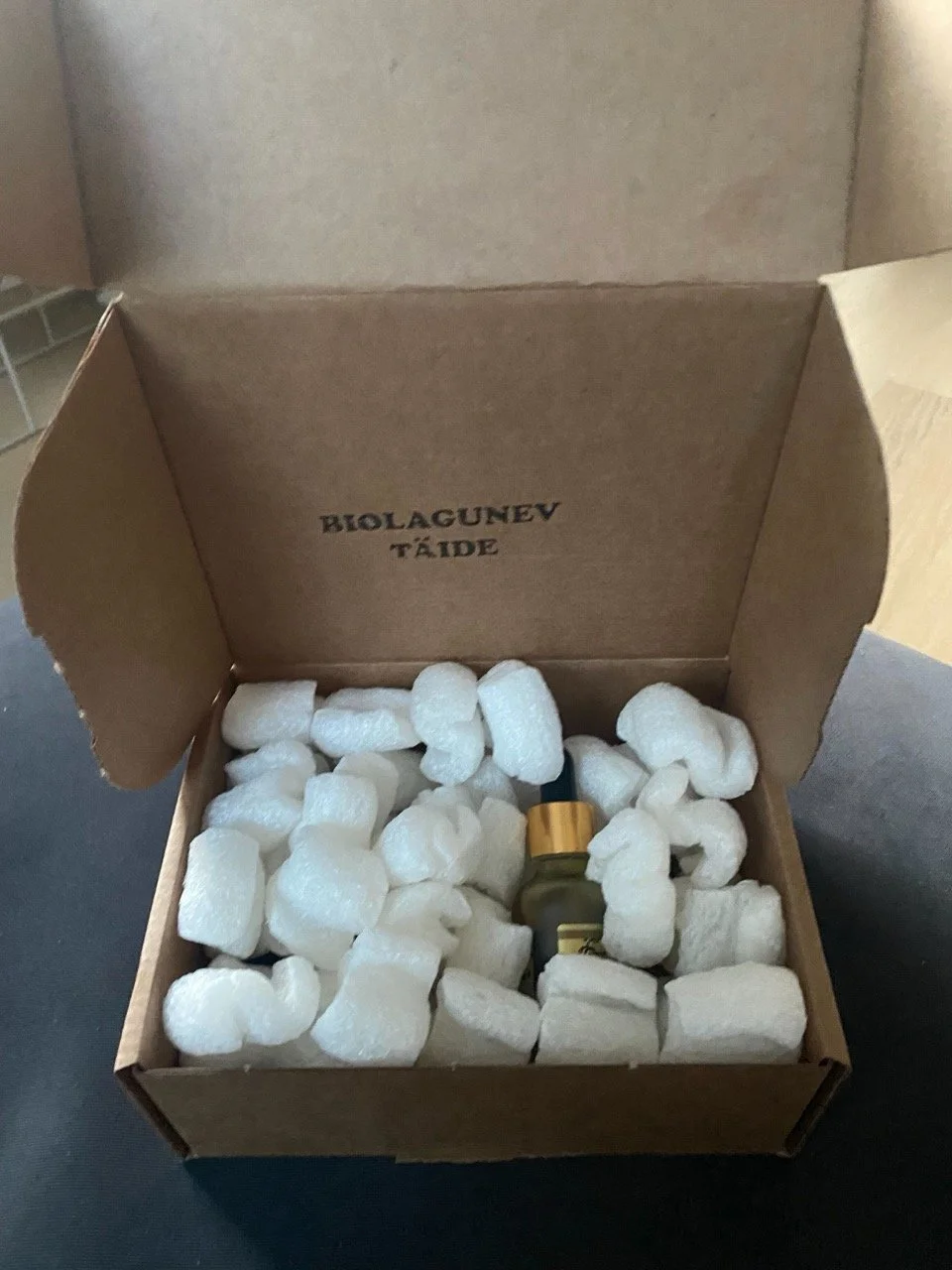10 Sustainable alternatives to bubble wrap
Since plastic bubble wrap was first created in 1957, retailers and people in general have used it as an inexpensive and effective way to protect delicate goods. Unfortunately, that convenience has come at a price.
What's wrong with plastic bubble wrap?
Bubble wrap is made from RIC4, a low-density polyethylene film (LPDF) that takes up to 1000 years to degrade. It’s used in astoundingly high quantities every year. Approximately 200 million Americans use at least one roll or box of bubble wrap in 6 months, according to research by Statista.
While, in theory, bubble wrap can be recycled, this is not what is seen in reality. This is due to the extensive time needed for it to degrade, and the fact that even as it degrades, it leaves traces of microplastics and other toxins. Another factor is that bubble wrap is not picked up curbside, reducing the possibility of recycling.
Overall, recycling plastic is becoming increasingly challenging due to the volume of plastic generated. Studies show that despite a 50% increase in recycling volume, the amount of plastic packaging that wasn’t recycled has increased by 2.0 kg per EU resident since 2009.
The impact of plastic waste on the planet can’t be overemphasised — just ask the Great Pacific Garbage Patch. Plastic has another big problem: its production relies on burning fossil fuels, which is heating up the planet.
The good news is that an increasing number of consumers are seeking alternatives to bubble wrap, and some are looking at amazing options like Bubble Wool.
No packaging is perfect, but better alternatives to bubble wrap do exist.
So, what can you use instead of bubble wrap? The best sustainable alternatives to bubble wrap are:
reusable
biodegradable & recyclable (and actually get recycled) and
made of zero fossil fuel-based materials.
Let’s take a look at some products that fit these requirements.
1. Bubble wrap alternative made of wool
Wool might be a new contender in the sustainable packaging industry, but it is making meaningful waves. It stands out as a completely biodegradable and compostable packaging material.
Pictured: Woola’s Bubble Wool
Most wool packaging companies (like Woola — that’s us!) use leftover or waste wool that would otherwise be burned or discarded.
At Woola, we use ethically sourced, low-grade leftover wool from free-to-graze sheep on farmlands (not factory farms), made following a low-waste production process.
Our most popular products are Wool Envelopes, a great alternative to plastic bubble mailers.
There are a few other companies making packaging out of wool, such as WoolCool and Puffin Packaging, but these are focused on thermal insulation for pharmaceuticals and food, rather than offering an alternative to bubble wrap.
Wool packaging is durable, reusable, and — unlike plastic bubble wrap — super easy to recycle. In fact, unless the packaging has been processed with additives, wool is compostable and biodegradable, releasing valuable nitrates back into the soil.
Packaging made of wool will also make your parcels stand out from a sea of ‘sameness’, as it’s likely your customers haven’t seen anything of the like before.
Estonian department store Kaubamaja found that customers were delighted to receive orders in Woola packaging. Many raved about it, saying,
“The contents of the packaging are nice, but the packaging itself is even nicer.”
Kaubamaja has seen a great client retention which has a direct link to the packaging they use.
“We were looking for packaging with a hook to bring awareness to packaging waste and be a great conversation starter.”
— Enel Kolk, Marketing Director at Kaubamaja
2. Air-filled paper cushions
Probably the most common sustainable alternative to bubble wrap and for plastic packaging in general is paper.
Paper is totally biodegradable and much easier to recycle than its plastic counterparts.
With the addition of strict forest protection laws in countries like Canada and well-established certifications like FSC, paper packaging is certainly a sustainable option to use instead of bubble wrap. Below, we’ve rounded up some paper-based bubble wrap alternatives.
While bubble wrap is great for covering individual items, air-filled paper cushions make for effective void filling. Add this to a box of shipment items for maximum shock absorption.
Air-filled paper cushions are made similarly to their plastic counterparts. Manufacturers seal air into paper packaging for a more sustainable and cost-effective alternative.
3. Corrugated paper
Corrugated paper sheets resemble cardboard but have the added advantage of a ridged exterior on one or both sides. This enhances their durability and makes them more shock-absorbent and moisture protective than basic cardboard.
Corrugated paper packaging is available in many styles, from padded envelopes to boxes. It’s also very cheap and readily customizable, like cardboard, so you can still maintain your branding.
The main downside is that this packaging option is typically bulkier than other alternatives and, as such, may be better for larger packages.
4. Kraft paper
Kraft paper is a very strong brown paper with multiple uses, including packaging, general DIY, and even protective floor covering.
Instead of bubble wrap, you can cover individual items in Kraft paper for shock absorption or line boxes with Kraft paper as a void fill.
Like most paper packaging, kraft paper is reusable, recyclable, and compostable (if unbleached).
It’s also relatively inexpensive compared to other alternatives. Just keep in mind that it might not offer an equal level of protection since it doesn’t have any “bubbles.” Before buying, you can also consider whether the kraft paper look and feel goes with your brand’s aesthetics.
5. Crinkle paper
Crinkle paper is made from shredded paper crunched into shape, much like your crinkle-cut fries. Businesses use substantial amounts as void filling, and for that purpose, crinkle paper is a good alternative. They can be plain brown (undyed) or dyed an assortment of colours for extra charm.
One advantage of crinkle paper is that it’s also easy to make on your own if you have kraft paper or recycled paper. It can also be reused and effectively prevents damage to fragile items when used properly. Undyed and untreated crinkle paper is also easily recyclable.
6. Paper bubble wrap
Several packaging companies like Kite Packaging or Papier Spick offer paper bubble wrap, so if your heart is set on bubble wrap, you can choose between wool or paper.
Paper bubble wrap is designed similarly to plastic but is biodegradable and recyclable.
It’s made with indentations on the material and is about as durable as the plastic version.
Some companies even make their paper bubble wrap with recycled paper, so you can look out for that if you wish to be as sustainable as possible.
7. Honeycomb paper wrap
Honeycomb paper or hive paper is layered paper packaging with perforations resembling the typical honeycomb structure. It’s particularly popular for wrapping glass bottles or containers and provides a measure of padding to keep them safe.
Elliot Davidson, an eCommerce consultant at Parcel Master says his company chose this alternative because it
“takes up less space, is cheaper, and equally as protective if used correctly.”
It’s definitely easy on the eyes and surprisingly durable for perforated packaging.
8. Mushroom packaging as an alternative to bubble wrap
Mushroom packaging is a unique compostable and recyclable packaging solution. It’s made from fungal mycelia grown over agricultural waste. The product is then bound together to keep its shape.
This packaging option is lightweight and great for holding individual or set items that fit into a mold. Unlike wool and paper bubble wrap sheets, it can’t be wrapped around an item; the product must fit in it. It’s not much more expensive than plastic bubble wrap, and it’s compostable in weeks.
Pictured: packing peanuts that came with a note saying “the fill is biodegradable”.
9. Biodegradable packing peanuts for void fill
These packing peanuts (not related to peanuts; only named after their shape) are made from materials like wheat and corn starch and are used as void filling for shipments, like crinkle paper and air pillows.
Biodegradable packing peanuts typically dissolve in water and are easily compostable. As they’re best for void filling, they may not work for smaller items that need to be shipped in envelopes.
While packaging peanuts break down more easily, they can still create dust, dissolve in humidity, and lack the premium unboxing experience that high-end ecommerce brands want to deliver. Plus, sourcing and manufacturing them can still carry a carbon cost.
When biodegradable packing peanuts (nearly always made of bioplastics) are used, it’s important to mark the correct way of disposal, and ideally, give proof with 3rd party certifications.
10. Wooden springs made of wood
An innovative newcomer in the packaging world, Raiku is substituting bubble wrap with biodegradable wooden “fabric.”
These springs are flexible and protective thanks to their structure. Like crinkle paper and packing peanuts, these springs are useful shock absorbers in boxed shipments.
Because the springs are made from wood, they can be reused, recycled, or composted.
While they may be biodegradable, their production still involves processing, transport, and often energy-intensive shaping.
Which “eco-friendly” bubble wrap alternative will you choose?
Not all bubble wrap alternatives are created equal. From biodegradable packing peanuts and shredded paper to corrugated cardboard and wooden springs, brands today have more sustainable options than ever before.
But many of these come with trade-offs such as dust, bulk, poor aesthetics, or limited protection. Some are difficult to dispose of properly, while others fail to align with the premium feel that high-end customers expect.
Woola was designed to solve all of that. Made from leftover Estonian wool, our packaging offers high-impact protection, a soft tactile experience, and a visual appeal that elevates every unboxing. It’s lightweight, biodegradable, customisable, and ethically produced. Most importantly, it sends a clear message: your brand cares about sustainability and attention to detail.
If you're exploring alternatives to plastic bubble wrap, don’t settle for “good enough.” See what sets Woola apart. Request your free sample today or discover how we can customise your packaging.

